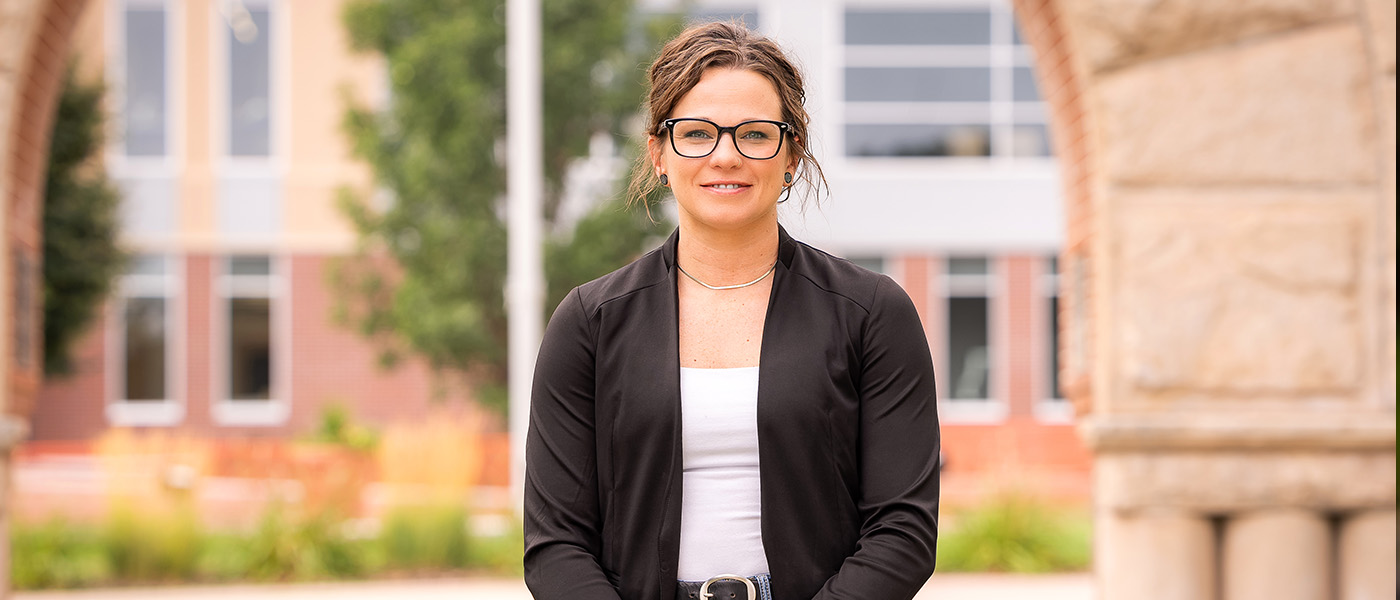Laura Brunmaier Builds a Foundation for New Discoveries
Published November 2024 in Fall 2024

To paraphrase 1980s one-hit wonder Matthew Wilder, nothing is going to break the stride of Laura Brunmaier, and there is no slowing down the South Dakota Mines Ph.D. research assistant.
“If I don’t have a problem that needs to be solved, I get bored. Engineering works well for that. We are not just exploring something for the love of science; we are trying to find problems and come up with solutions,” Laura said.
And that is precisely what she has been doing since leaving a successful career in 2016 and returning to academia.
In May, Laura defended her Ph.D. dissertation on establishing the foundation for developing a tissue engineering vascular graft – research she has spent the past five years working on with Dr. Travis Walker, associate professor in the Karen M. Swindler Department of Chemical and Biological Engineering.
Simultaneously, she contributed to the National Institute of Health (NIH) proposal to create a new tissue engineering and cell culture laboratory with soft matter characterization on the Mines’ campus. And a day before her dissertation defense, Laura received $100,000 for a NASA R3 grant proposal she submitted with the university’s physics department. The proposal looks at the effects of low-dose ionizing radiation on inflammasome development in endothelial cells.
“I have a new project now,” Laura said just days after presenting her dissertation.
Laura will spend the next year working on NASA research while waiting for NIH funding to build the new lab, providing space to expand her research and develop a usable biomaterial vascular graft. The Mines lab will be a part of the South Dakota Biomedical Research Infrastructure Network (SD BRIN), led by the University of South Dakota and its Sanford School of Medicine. The goal of SD BRIN is to develop human resources and research talent in the areas of biomedical sciences and bioinformatics.
Laura has spent several years laying the foundation for a vascular graft that is made of biological material that’s already in the human body. She was awarded a $20,000 grant from the National Institute for Occupational Safety and Health and then a $40,000 grant from the Alternatives Research and Development Foundation to develop a media for cells that was chemically defined and had no animal constituents.
“All these projects set a foundation for us to build a vascular graft so we can start to understand what inflammation looks like in endothelial cells, which are really important to the longevity of any vascular transplant,” she said.
Laura hopes to hear about the NIH funding sometime in early 2025.

Get to know Laura
Learn more about Laura and what brought her to academia in our Fall 2022 cover story, ‘Change of Heart.’
“I think we will have really good traction in the next two to four years,” she said. “We are just waiting for the money to come in and for this lab to get built, but we have a strong set of intuition on how to handle these materials and what we need to do now.”
Laura’s current focus is on her NASA research and building the lab, which she said will be her “new baby.” However, she believes there is a lot of opportunity for growth in the world of biomedical engineering in Western South Dakota and plans to be at the forefront of that growth.
“The university is emphasizing entrepreneurship, which I think is great because there are a lot of smart people here that come up with some great ideas, and some of those ideas have led to good businesses in the area,” she said. “It would be great to see more biotech in this area, and it would be awesome if I could help with that.”
